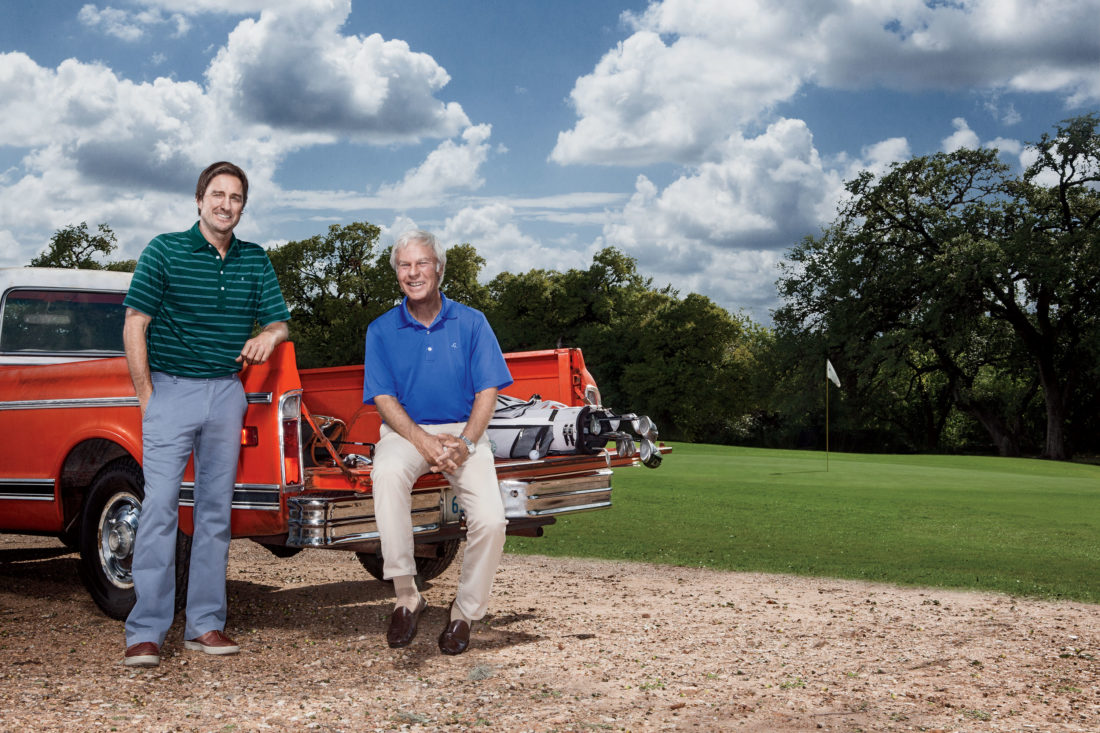We all must thank Golf World's Ryan Herrington for attending and reporting on the USGA Annual Meeting so that the rest of us can only dream of mingling in a sea of navy, grey, officials from wannabe U.S. Open courses, and many others working to not say anything construable as interesting. Because you know how rumors get started!
New President Mark Newell replaces Diana Murphy and he sounds aware that the USGA's focus on sustainability is going to be pressured by distance increases.
“When you combine [distance] with the effect of the size of golf courses on the economics of the facilities, on the environmental issues that come from that and, in some cases, on the effect on just the enjoyment on golfers, it’s something we need to look hard at,” Newell told Golf Digest. “That’s what we’re planning to do. We have been, and we’re going to be focused on what that situation is and how we can deal with it.”
Herrington says the end of February will yield a joint USGA/R&A distance study update. Last year's said there wasn't anything to see here.
There was also this from Herrington's report:
In addition to the bigger picture issues, there are other practical matters the governing body is preparing to address. Among Saturday’s announcements was the formal transition of the USGA Members Program, established in 1975, into a newly formed USGA Foundation, charged with helping increase the ability for golfers to invest and contribute financially to the game.
To paraphrase our late, great friend Frank Hannigan, you're no one in golf if you don't have at least two foundations.
In conjunction, the association is launching a multi-year campaign “Driving Golf Forward” to help fund innovation and research while boosting inclusivity within the sport.
PSA makers rejoice!
The full release on Newell's appointment is here, along with a discussion hosted by Mike Trostel.
Mark Newell Elected as 65th USGA President
Other elected volunteers include World Golf Hall of Fame member Nick Price
LIBERTY CORNER, N.J. (Feb. 3, 2018) - Mark Newell of McLean, Va. has been elected to serve a one-year term as the 65th president of the United States Golf Association (USGA). The election took place at the Association’s Annual Meeting in Miami Beach, Fla.
Newell will lead the 15-member volunteer USGA Executive Committee, which provides strategic direction and oversight to the Association's full-time management and staff.
“I’m grateful for the opportunity to serve the game of golf as USGA president, and to champion our staff’s work to lead, grow and sustain our sport,” said Newell upon his election. “We are at an exciting time in golf’s evolution, and our collective focus on ensuring its future has never been stronger.”
Newell, now in his eighth year with the Executive Committee, has chaired the Rules of Golf Committee since 2013. During that time, he has been a leading force behind the USGA’s joint initiative with The R&A to modernize golf’s Rules. He also chaired the USGA Handicap Committee and spent four years as co-chair of the USGA/R&A initiative that led to the development of the World Handicap System, which is scheduled to debut in 2020.
The other members of the 2018 Executive Committee were also elected at the Annual Meeting, with four new additions: three-time major champion and former world No. 1 player Nick Price of Hobe Sound, Fla.; Kendra Graham of Winter Park, Fla.; Sharon Ritchey of Asheville, N.C.; and Paul G. Brown of Brookville, Md.
Current members of the Executive Committee who were elected to continue their service to the game are: J. Michael Bailey, of Sandy, Utah; Stephen E. Beebe, of La Quinta, Calif.; J. Stuart Francis, of Burlingame, Calif.; Robert D. Kain, of La Quinta, Calif.; Martha Lang, of Shoal Creek, Ala.; Gregory B. Morrison, of Duluth, Ga.; Clifford J. Shahbaz, of Portland, Ore.; and William B. Siart, of Pacific Palisades, Calif.
Two current members of the Executive Committee were also elected to serve as officers: Mark Reinemann, of Pinehurst, N.C., as secretary, and Thomas Barkin, of Atlanta, Ga., as treasurer.
Richard A. Shortz, of Los Angeles, Calif., was elected to serve as USGA general counsel. Robert Weber will retire as general counsel.
The USGA Women’s Committee, which advises the Executive Committee on matters pertaining to women’s golf and supports women’s amateur championships, has appointed Pam Murray of Richardson, Texas, as chairman and Courtney Myhrum of Pittsburgh, Pa., as vice chairman for the 2018 term.
Other members of the 2018 Women’s Committee are Jan Berry, of Madison, Ala.; Debbie Bizal, of Evansville, Ind.; Barbara Byrnes, of Mesa, Ariz.; Carol B. Graybeal, of Chatham, N.J.; Jean Mulcahey, of Hydes, Md.; Delia Nava, of The Woodlands, Texas; Nancy Rees, of Rye, N.Y.; Mary Shepperd, of San Diego, Calif.; Peggy Span, of Houston, Texas; Kathryn Washburn, of Mill Valley, Calif.; Ginny Waller Zanca, of Memphis, Tenn.; and Patti Zeeman, of Lake Bluff, Ill.













